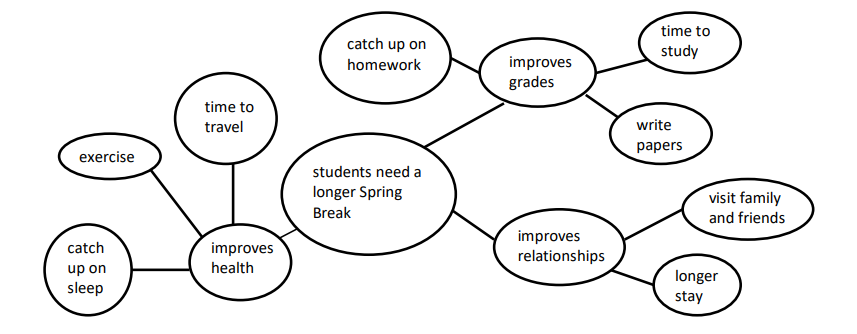Prewriting and outlining are essential to the writing process, as they will guide you and help you define and plan your work's scope. These strategies are not just useful in the beginning of your writing process but can be revisited as you write. While this handout covers general concepts, always work with your audience and assignment in mind.
Determine the genre (type of writing), purpose, audience, and tone of your writing to simplify and focus your writing process.
To help you understand the relationship between your ideas and visualize how you could organize them in an essay, group your thoughts into categories according to their similarities.

A thesis statement presents your main point, limits your topic, and indicates your paper’s organization. It is typically placed at the end of your introduction. Composing a working thesis that incorporates your main claims before you begin writing can help you structure and form a clear argument throughout your essay. You will likely continue to refine your thesis as you write.
Freewriting can be a great way to get all your thoughts down on paper. Try writing without stopping, setting a timer, writing down all you know about your topic or even recording a conversation where you explain your topic to a friend.
After freewriting, you might find that your paper jumps among topics and lacks focus. There are a few different strategies you can use to organize your draft:
Outlines help you organize all the information you have gathered. Outlines can be as detailed or as general as you want. The process of creating an outline depends on your individual writing style and creation process, so there is no wrong way to make an outline.
Title: The Importance of a Longer Spring Break
A longer spring break improves health, grades, and relationships.
Thesis: Implementing a longer spring break for college students would benefit their health, grades, and relationships.
This paragraph will explain how a longer spring break improves health by giving students more time to sleep and exercise.
This paragraph will be about how extending spring break would allow students to catch up on homework and papers.
This paragraph will show that a more extended spring break helps students improve their relationships with family and friends.
This paragraph includes a counterargument as required by the assignment. It includes why having a more condensed spring break is preferred by some students and faculty.